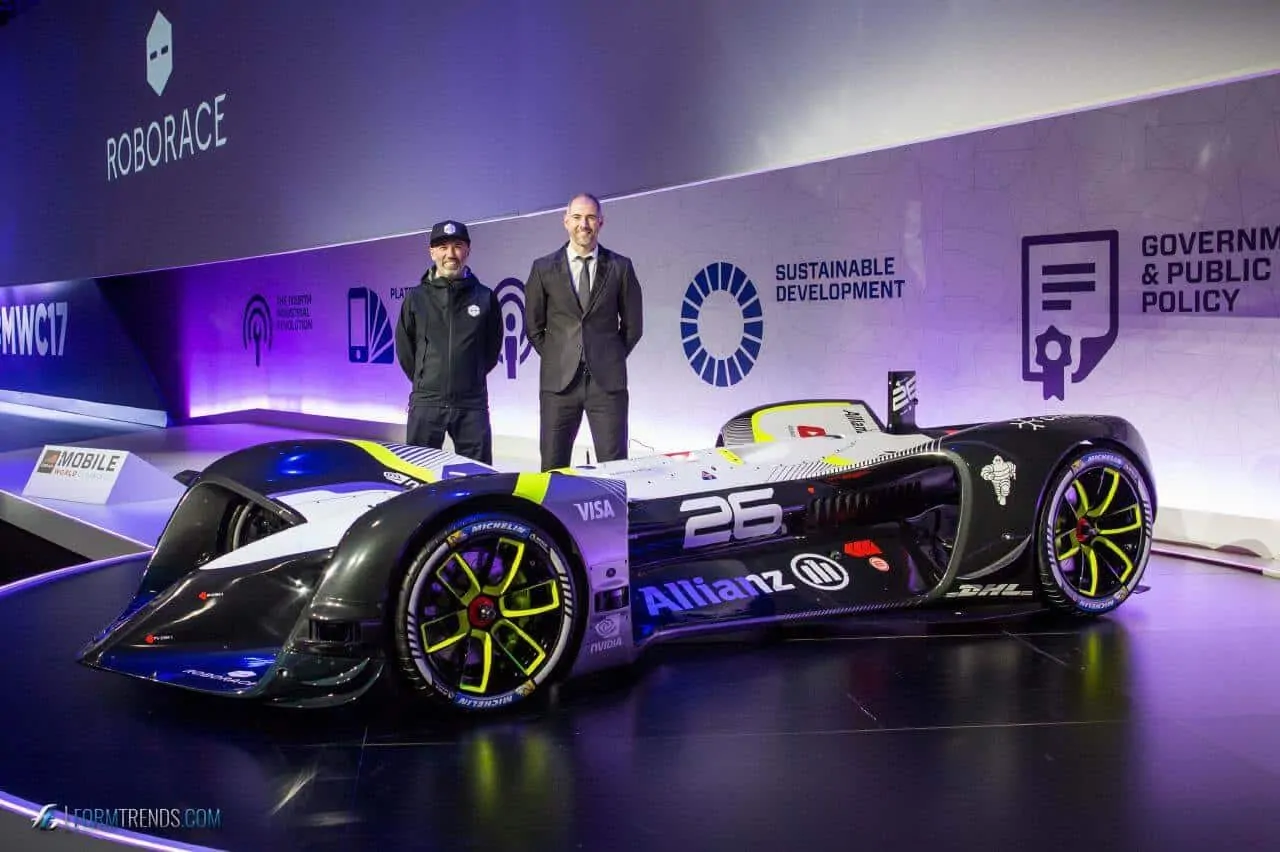Roborace revealed the world’s first driverless electric racing car — the ‘Robocar’ — at Mobile World Congress in Barcelona today. The car, designed by legendary designer and racing car fanatic Daniel Simon (now Roborace’s Chief Design Officer), was unveiled to the public during a keynote address on the evolution of autonomous vehicles.
Automotive futurist Daniel Simon is probably best known for his work designing vehicles for Hollywood sci-fi blockbusters, including Tron Legacy and Oblivion. But he’s also designed motorcycles and worked on a series of books with Scott Robertson. He’s been with Roborace for less than a year, and in that time has fashioned a design to cloak the 4800mm long and 2000mm wide Robocar.
WATCH OUR EXCLUSIVE TWO PART INTERVIEW WITH DANIEL SIMON HERE
Daniel Simon: Conceptual Designer and Automotive Futurist (Part 1)
Daniel Simon: Conceptual Designer and Automotive Futurist (Part 2)
“Roborace opens a new dimension where motorsport as we know it meets the unstoppable rise of artificial intelligence,” says Simon. “While pushing the boundaries of engineering, we styled every single part of the Robocar. We take special pride in revealing a functional machine that stays true to the initial concept shared, a rarity in automotive design and a testament of our determination. It’s a great feeling to set this free.”
The car weighs in at 975kg and has four 300kW electric motors and a 540kW battery. It is predominantly made of carbon fiber and is said to be capable of speeds over 320kph. The car uses a number of technologies to ‘drive’ itself including five lidars, two radars, 18 ultrasonic sensors, two optical speed sensors, six AI cameras and GNSS positioning.
At the hub of the systems is Nvidia’s Drive PX2 brain, which uses artificial intelligence to tackle the complexities inherent in autonomous driving. Capable of up to 24 trillion AI operations per second to be programmed by teams’ software engineers, the ‘brain’ utilizes complex algorithms and deep learning for 360-degree situational awareness around the car to determine precisely where the car is and to compute a safe, efficient trajectory.
“This is a huge moment for Roborace as we share the Robocar with the world and take another big step in advancing driverless electric technology,” Roborace CEO Denis Sverdlov said at the unveiling. “I am so proud of the entire team and our partners and particularly the work Daniel has done creating this beautiful machine. It was very important for us that we created an emotional connection to driverless cars and bring humans and robots closer together to define our future.”
Roborace provides an open AI platform with fixed hardware for companies to develop their own driverless software and push the limits in an extreme and safe environment. The series is designed to be a competition of intelligence so all teams will use the same ‘Robocar’ shown at the Barcelona event. The launch car’s livery proudly displays global leaders Lego, Visa, DHL, Allianz, Nvidia, Charge and Michelin all companies redefining their industries for the future. By ensuring the hardware is consistent all efforts will be focussed on advancing the software.
To date Roborace has been performing demonstrations with its more functional looking development cars, known as ‘Devbots’. In their last outing, the cars performed a world first as Roborace became the first company to put two driverless cars on display simultaneously on a custom-built city street track at Formula E’s ePrix in Buenos Aires.
“The progress with Devbot on track and building the Robocar in less than a year has been extraordinary and we cannot wait to continue the journey of learning with the Robocar,” added Sverdlov.
Roborace will continue to use DevBots for demonstrations and testing, introducing the Robocar into public displays during the remainder of 2017 with two Robocars taking to the track together later this year.
Fans of Roborace have been able to follow the series’ progress through the cutting-edge ‘Inside Roborace’ documentary on YouTube which gives a behind the scenes look at the complicated development process of driverless technology.










